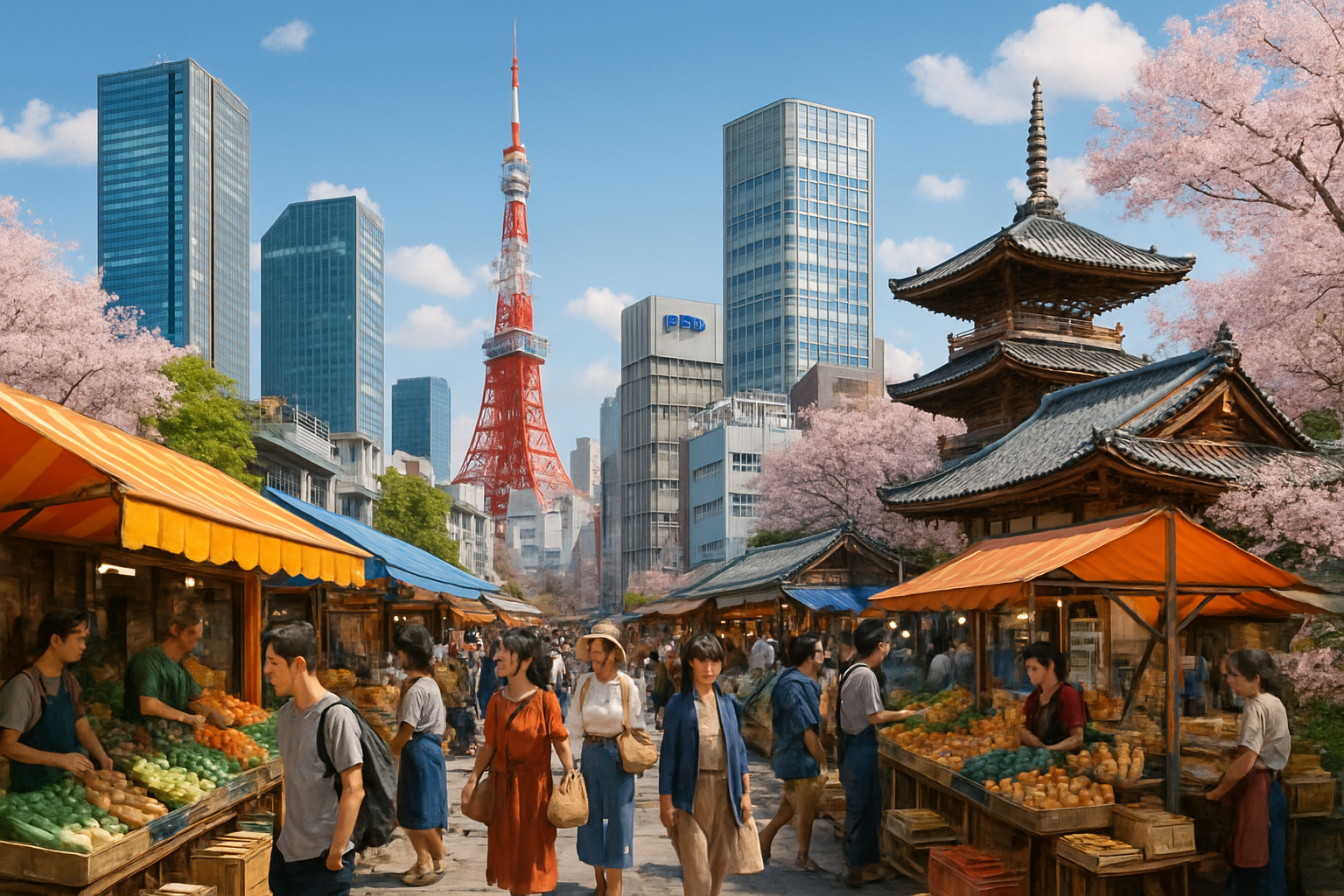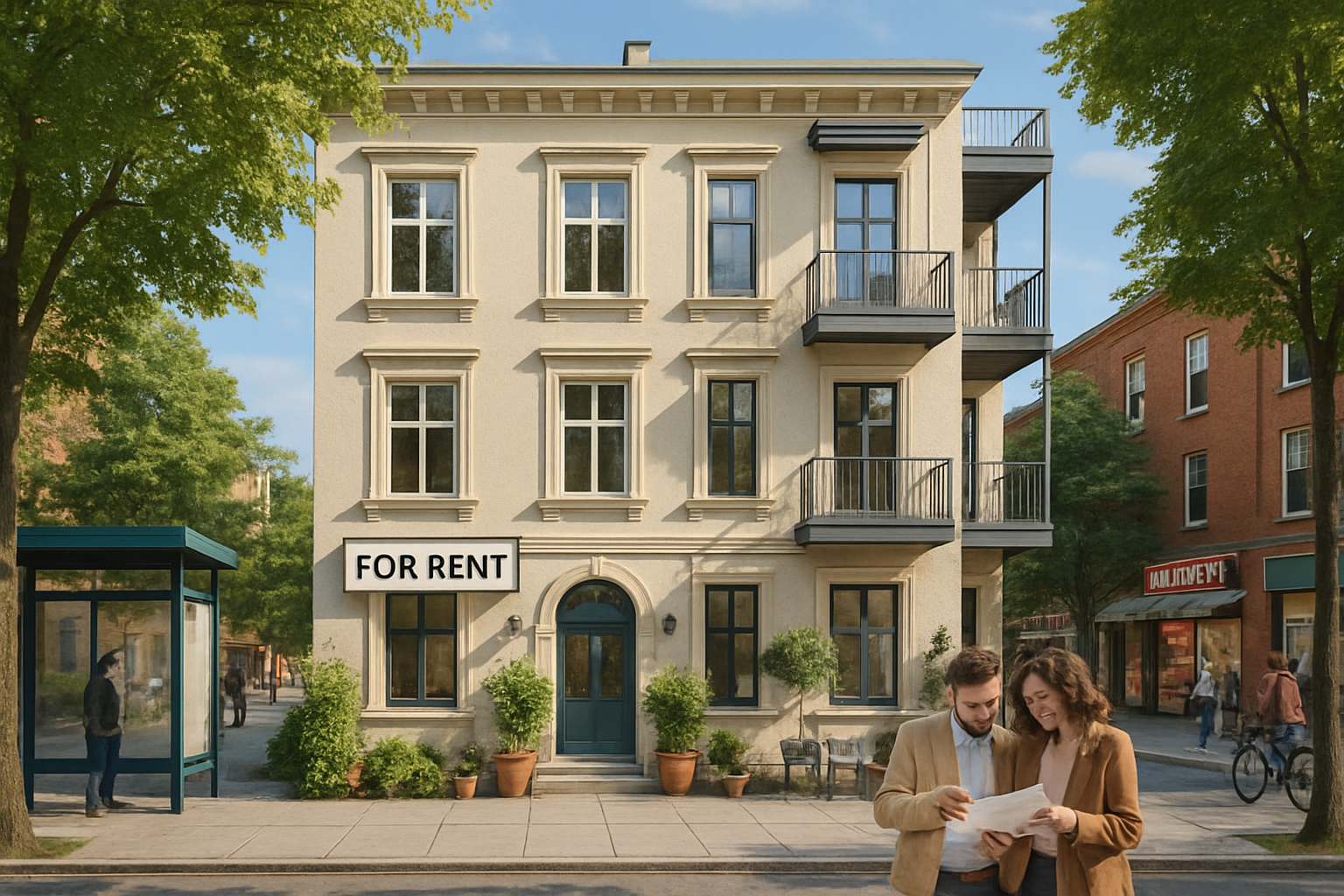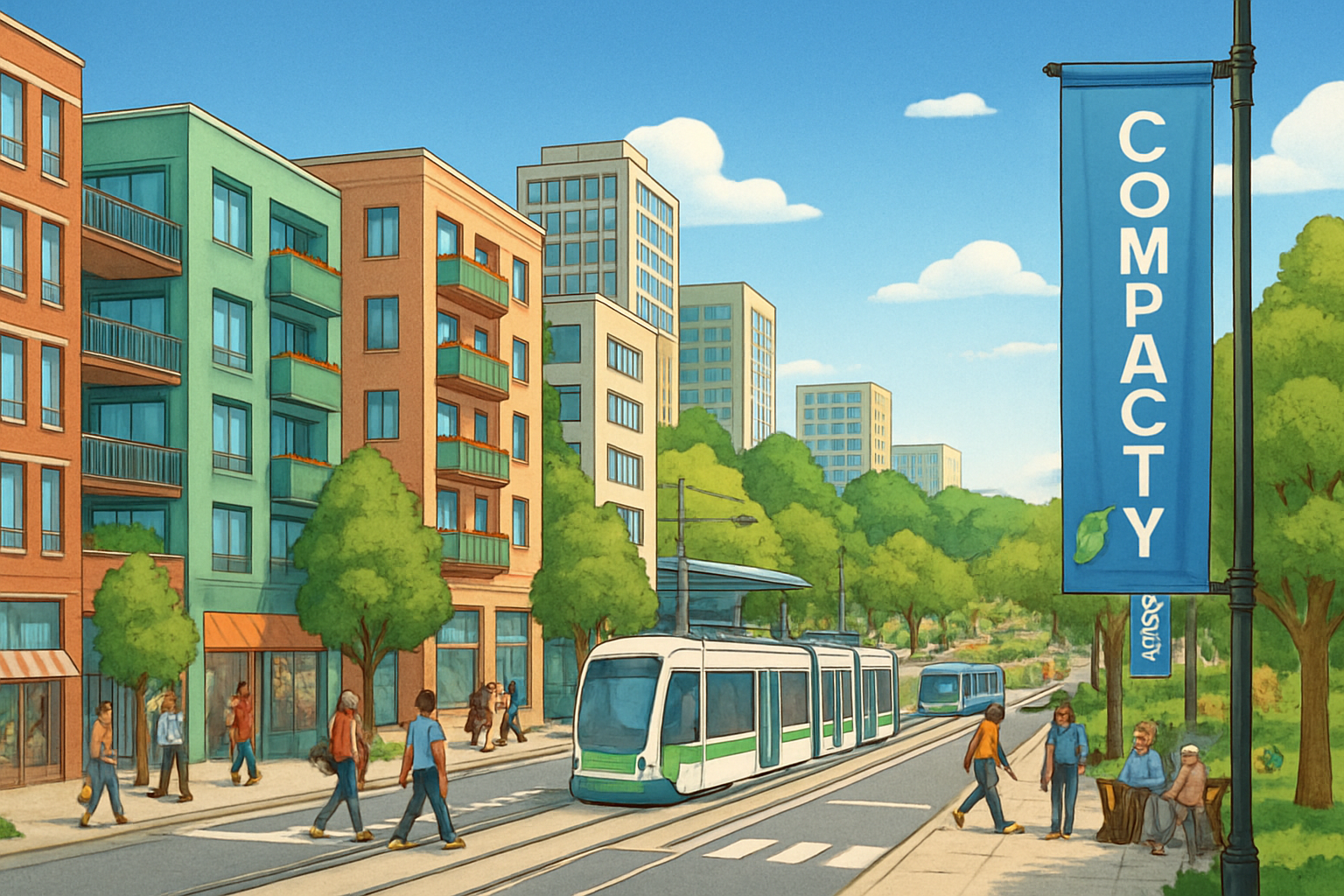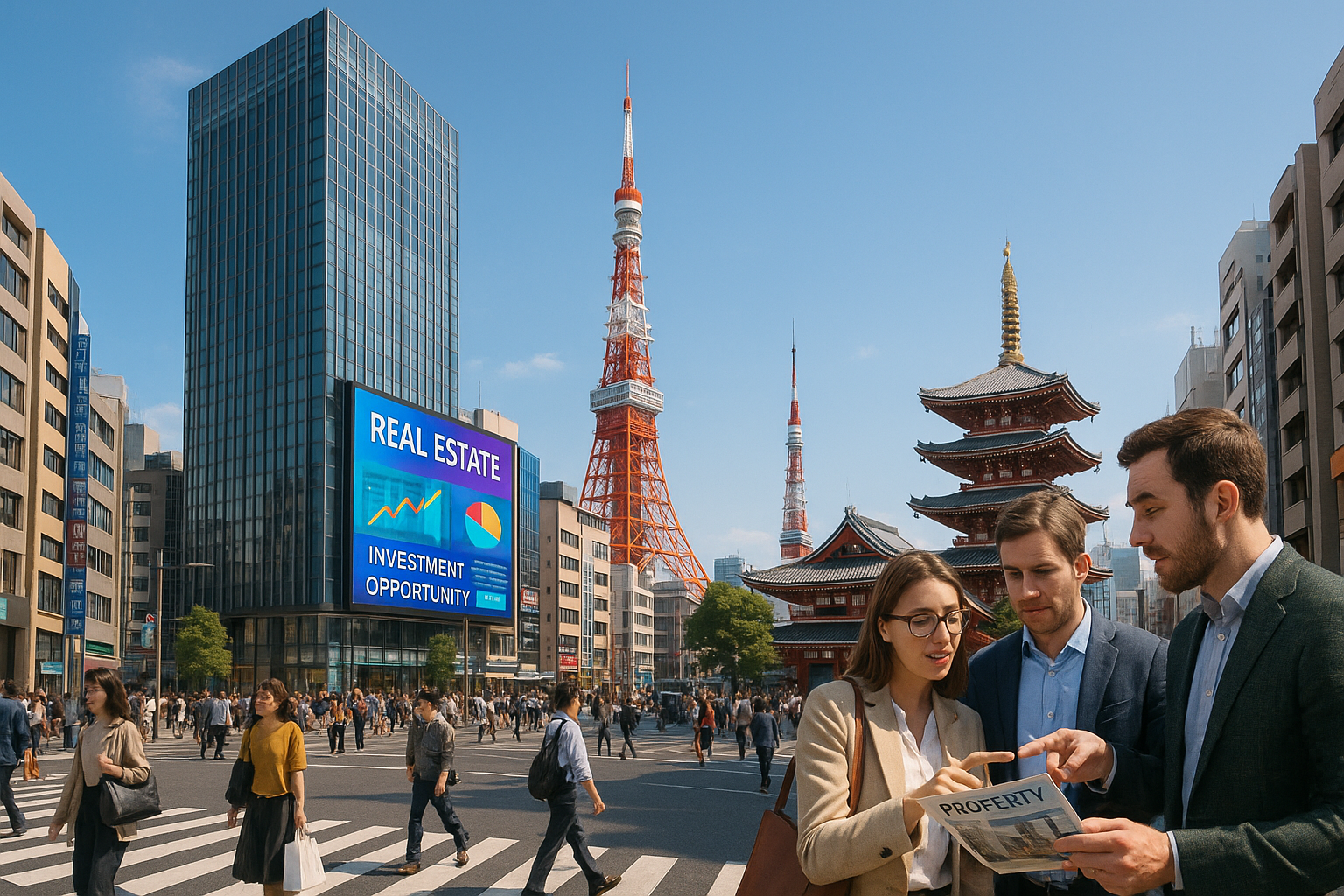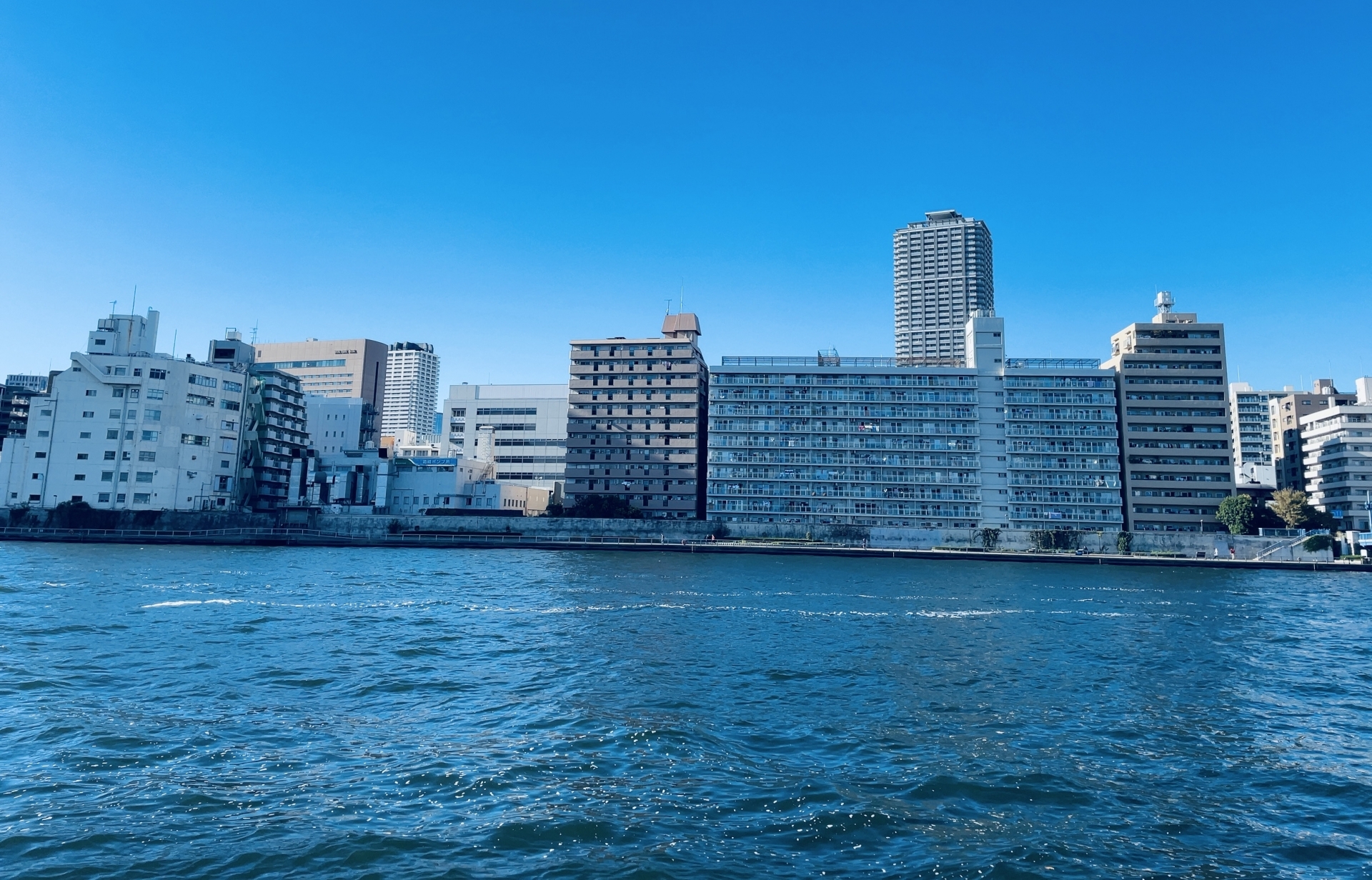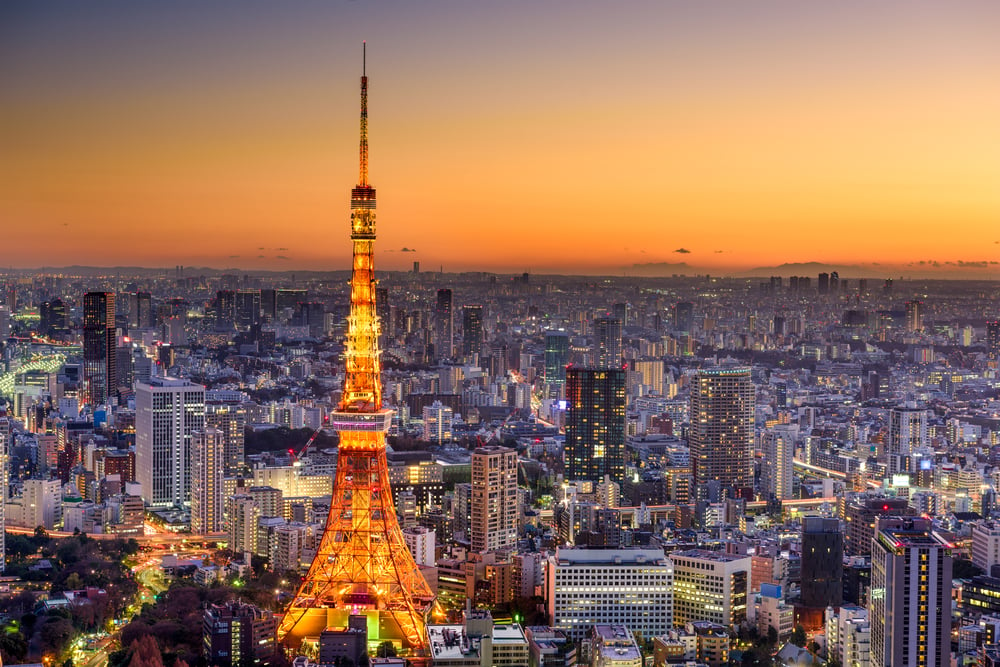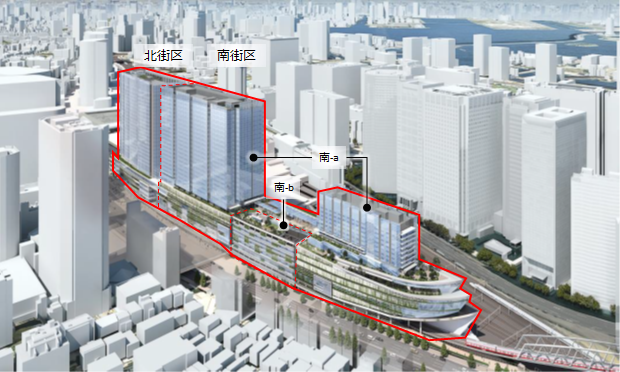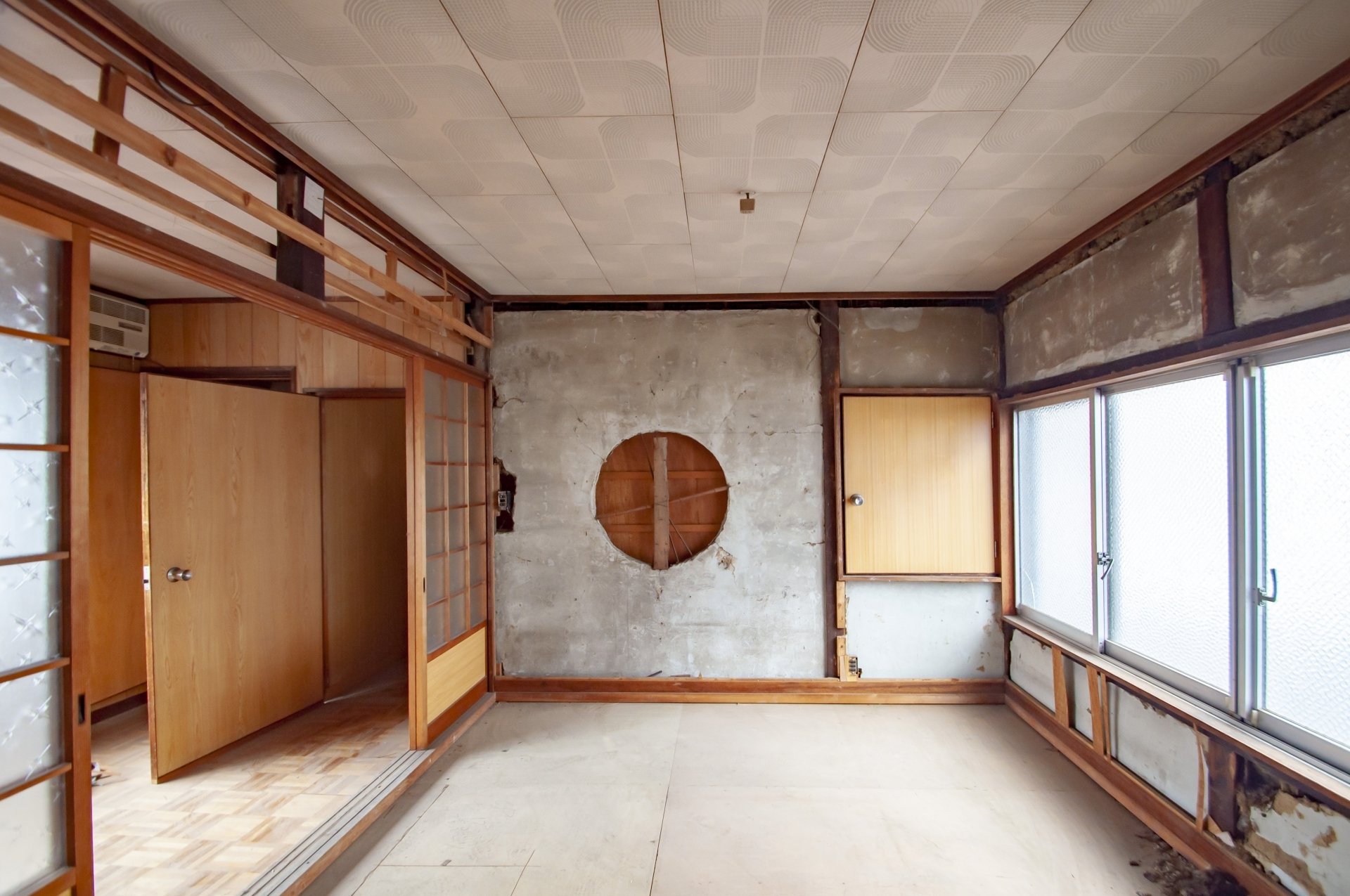 Rendering of the completed redevelopment of the Shinagawa Station area. The area surrounded by the red frame is the development area, which is divided into the North District on the left and the South District on the right (the center is the South-A section and the right end is the South-B section).
Rendering of the completed redevelopment of the Shinagawa Station area. The area surrounded by the red frame is the development area, which is divided into the North District on the left and the South District on the right (the center is the South-A section and the right end is the South-B section).
Development Background
The Shinagawa Station area is the gateway to Haneda Airport, and with plans to install the first station of the Linear Central Shinkansen Line, the area is becoming increasingly important as a transportation node connecting domestic and overseas cities. The national government and the Tokyo Metropolitan Government have positioned this area as "a hub for international exchange that will drive Japan's future growth," and are promoting urban development to increase competitiveness by integrating the station and the city. Against this backdrop, a large-scale redevelopment project on the west side of Shinagawa Station, tentatively called the Shinagawa Station District, has been planned. The project has been designated as an urban revitalization project under the National Strategic Special Zone, and is designed to strengthen urban infrastructure and improve international competitiveness.
Project Outline and Plan

The Shinagawa Station District redevelopment project covers an area of approximately 3.3 hectares (33,500 m2) that stretches west of JR Shinagawa Station. The planned site is divided into the North and South Urban Areas (South-a and South-b), where two 28-story (approximately 150 m high) high-rise buildings and one 9-story mid-rise building are planned to be constructed, respectively. The total floor area will be approximately 374,300 m2, making it one of the largest redevelopment projects in central Tokyo. The main uses will include offices, commercial stores, hotels and other lodging facilities, station facilities, international standard conference halls and halls (assembly halls), parking lots, and other multifunctional complex facilities. In particular, the South Urban Area will include business collaboration support facilities and business exchange facilities (co-working space, conference functions, etc.), and will be positioned as a base for creating new value and interaction. On the other hand, in the low-rise area of the North District, in addition to station facilities and commercial facilities directly connected to Shinagawa Station, there are plans to build an information transmission facility that will transmit information on the attractions of various regions of Japan and the history and culture of the region, and will be connected to the new Shinagawa Station (tentative name) on the Tokyo Metro Namboku Line that is scheduled to open in the future.
Outline of the plan by district

-
North District (in charge of JR East): Site area of approximately 1.47 ha, total floor area of approximately 165,000 m2. A new skyscraper with 28 floors above ground and 3 floors below with a height of approximately 150 meters will be constructed. The main use of the building will be offices, with station facilities, commercial facilities, and information dissemination facilities to be located on the lower floors.
-
South Urban Area (South-a) (Keihin Electric Express Railway Co., Ltd.): Site area: approx. 1.73 ha, total floor area: approx. 201,000 m2. It will be a skyscraper with 28 floors above ground and 2 floors below, approximately 150 m high, and will include a hotel and other lodging facilities and a large hall (assembly hall), in addition to offices. The new Keikyu Line station will be housed inside the building, and the structure will be integrated with the station functions.
-
South Area (South-b) (Keihin Electric Express Railway Co., Ltd.): Site area: approx. 0.15 ha, total floor area: approx. 8300 m2. It will be a medium-scale building with 9 floors above ground and 1 basement floor, approximately 47 m in height, and will mainly consist of offices, stores, and parking lots.
Roles of Participating Companies and Government Agencies
East Japan Railway Company (JR East) and Keihin Electric Express Railway Co. This is a rare large-scale redevelopment collaboration between two railroad companies, and it is noteworthy that JR and Keikyu are working together to reorganize the Shinagawa Station area. In February 2025, the Ministry of Land, Infrastructure, Transport and Tourism (MLIT) approved this project as an "excellent private-sector urban redevelopment project plan," and the approved developers (JR East and Keikyu) are now eligible for financial support and tax incentives from the Organization for Promoting Private Sector Urban Development. This certification means that the government considers this development to be an important project that will contribute to urban revitalization, and the Cabinet Office and the Tokyo Metropolitan Government are also involved in the planning process under the framework of the National Strategic Special Zone. The Tokyo Metropolitan Government is proceeding with urban planning decisions, environmental assessments, and other procedures, while Minato Ward is cooperating as a local government in the development of the surrounding area and in dealing with cultural assets. In addition, the Urban Renaissance Agency (UR Organization) is in charge of the land readjustment project around the station, and the Ministry of Land, Infrastructure, Transport and Tourism and the Bureau of Construction of the Tokyo Metropolitan Government are cooperating in road and plaza development.
Development Schedule
The construction period differs for each block, and development is planned in phases. Construction of the North District will begin in FY2025 and is expected to be completed by FY2030 (completion around March 2031). Construction of the South Urban Area (South-a) will also begin in FY2025, but will be a long-term project due to the relocation of station functions and phased construction, and is scheduled for completion by FY2036 (completion around March 2037). On the other hand, construction of the South Block (South-b) is scheduled to begin in FY2030, after the completion of the other blocks, and to be completed in FY2032. The construction of the South Block (South-b), on the other hand, is scheduled to start in 2030, after the completion of the other blocks, and is scheduled to be completed in 2032. In conjunction with these events, the prior opening of some facilities and the gradual changeover of station functions will be considered. The final completion of the entire project is expected in the mid to late 2030s, followed by the sequential opening of the new town.
Impact on the Local Economy and Real Estate Market
The redevelopment of the Shinagawa Station area is expected to have a significant impact on the local economy and real estate market. First, during the construction period, large-scale construction is expected to create employment and related demand, and once completed, the new office and commercial space is expected to attract domestic and international companies and investment, thereby revitalizing the local economy. Shinagawa is already a popular area for corporate locations due to its convenient access to multiple train lines, and the state-of-the-art office space to be provided by this project is expected to stimulate further demand for such space. In fact, real estate values in the Shinagawa area are on the rise due to expectations for redevelopment, and it has been noted that transaction prices of existing luxury condominiums have also been rising in recent years. At the same time, however, competition is expected to intensify due to the successive supply of new large-scale office buildings in central Tokyo, including Shinagawa and Toranomon. However, the project is strongly believed to have an advantage in attracting both domestic and foreign companies, taking advantage of the rarity of its development in Qinqing over the first station of the Linear Shinkansen Line and its location characteristics with excellent access to the airport. Experts believe that "the redevelopment cluster around Shinagawa Station could significantly shift Tokyo's center of gravity as a business hub to Shinagawa as well," and the new office supply is expected to contribute to strengthening the international competitiveness of Tokyo as a whole.
Future Prospects
The Shinagawa Station District project, in combination with multiple development plans in the surrounding area, will gradually renew the cityscape over the next 10 years. The Shinagawa Station East Exit area to the east, the redevelopment of the former Shinagawa Goose site to the west, and the "Takanawa Gateway City" project around Takanawa Gateway Station are just a few examples of the extensive redevelopment projects underway in the Shinagawa area, and this project is intended to work in tandem with these projects to create a new city. In addition to the effect of the opening of the Linear Central Shinkansen Line, the Tokyo Metro Namboku Line extension to Shinagawa Station (new station scheduled to open) is expected to be realized, further enhancing the railroad network. With the completion of these infrastructure improvements and redevelopment buildings, Shinagawa will be reborn as a "hub for international exchange," where the station and the city are seamlessly connected. In the future, Shinagawa is expected to become an urban hub that attracts many people from Japan and abroad for both business and tourism, and to lead Tokyo as a new "face" of the city with a scale and functionality comparable to other urban subcenters such as Marunouchi and Shinjuku. The administration and developers intend to balance sustainable urban development with the enhancement of regional value, while giving due consideration to the preservation and utilization of cultural assets such as the former Takanawa Chikkyo Embankment (a historic site of a former railroad facility). While there may be adjustments to the plan as excavations progress and social conditions change, the redevelopment of the Shinagawa Station District is making steady progress as a project that will significantly change the urban structure of Tokyo, and the future of the project is being closely watched by professionals with a keen interest in urban development and real estate.

Daisuke Inazawa
Representative Director of INA&Associates Inc. Based in Osaka, Tokyo, and Kanagawa, he is engaged in real estate sales, leasing, and management. He provides services based on his extensive experience in the real estate industry. Based on the philosophy that “human resources are a company's most important asset,” he places great importance on human resource development. He continues to take on the challenge of creating sustainable corporate value.

.png)

